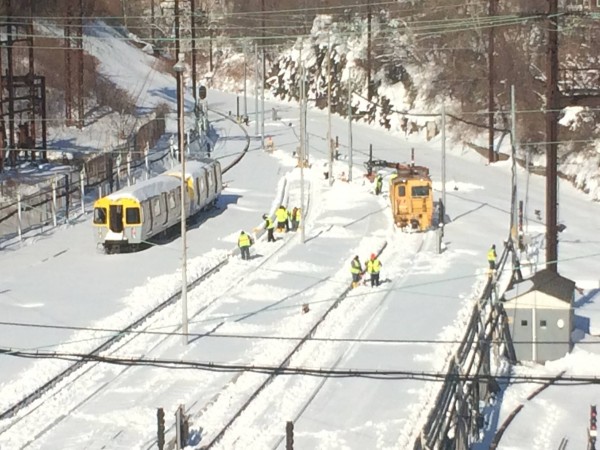

However, right after Chamber St, where the and trains split from the train, they become local trains and will stop at every stop thereafter. Between those two stations, the and trains run express and will skip certain stations. For instance, the, and trains share a common track between 96th St station uptown and Chamber St. The transition from express to local service usually occurs when train services split from their shared portion of the track. This transition is very subtle and you would not even notice while riding the train. An express train can become a local train at some time. Unfortunately, trains are not reliably express or local along their entire route. Similarly, on the 8th Ave line, the train will generally run express while the train will always run local. From the above table, you can see that the and trains are generally express trains, but the train is a local train. Express trains skip certain stations for faster service, while local trains stop at every station along their path. For instance, "Let's take the 4 line to Yankee Stadium" is technically incorrect, but the single number 4 implies that we are talking about the 4 service. Even though a line and a service have different meanings, you will find that colloquially the word "line" is sometimes used when "service" or "train" is meant. People never say, "Take the green" or "Take the red line" Instead they say, "Take the 4 train" or "Take the 2 train". This is the reason why locals don't refer to lines by their names or even color. It's confusing to say that you are taking the "blue" 8th Ave line, because the three services within them (, and ) go to entirely different endpoints (or terminals as we call them) and even stop at different stations on the same shared path. I should pause here and note that while it might be tempting to use these colored lines to describe directions, you ought to be using the single letter/number designation for the the specific services instead. Similarly, the, and services on the "red" Broadway-7th Ave line run along Broadway and 7th Ave, but they do start and end at different stations. However, these three trains have different starting and/or ending stations. These three services are grouped into this "blue" 8th Ave line, because they share a common tunnel/avenue/street at some point on their journey (8th Ave). For instance, within the "blue" 8th Ave line there are three services which are, and. We refer to these services as just "trains". Within each line, there are a few services which are each designated with a single letter or a single number. Even locals often don't know the official name of a given line (and you'll see later why). Don't worry about the line names too much. The 8th Ave line for instance is always blue, while the Broadway - 7th Ave line is always red. Here are the main lines: Train ServicesĪs you can see, each line has a name and a specific color. The colored subway lines on the map indicate related trains that share a portion of common track. The cost of going from one station to a neighboring station (say, a one-minute ride) is the same as traveling from one end of the map to the other (which might take two hours). Unlike many other subway systems around the world, there are no zones because you pay the same fare regardless of how far or how long your trip is. You can also find on this map a few of the other commuter lines that are not officially part of the subway, such as Long Island Rail Road (LIRR) tracks, buses, and AirTrains - but let's ignore those for now.Īs you can see, no subway line ever leaves New York and no physical subway connection exists from Staten Island to the rest of the subway system. The thick, solid colored lines are obviously the subway lines. Stations might actually be farther apart or closer together than they appear on this map. The map is intentionally distorted to highlight the subway lines, stations, and the connections between them.

Manhattan is not that wide and Staten Island isn't really that small. The first thing I want to point out is that this map is not drawn to scale.


 0 kommentar(er)
0 kommentar(er)
